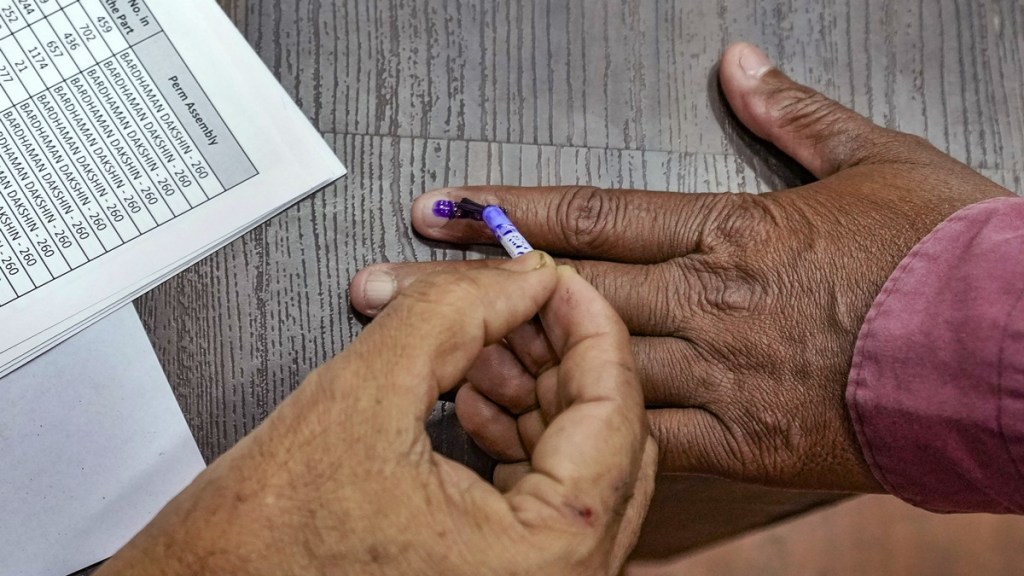By Farooq Wani
Those not conversant with the political scenario in J&K may feel that 37.98 percent voter turnout recorded in Srinagar parliamentary constituency is nothing to cheer about but this seemingly insignificant figure reflects a whopping more than 250 percent increase when compared to voter turnout five years ago. Readers would recall that voter turnout in the 2019 LS polls was only 14 percent!
Hence, even New Delhi’s most rabid critics would agree that this is clearly an indication of the prevailing environment of peace and stability in the Kashmir Valley, as well as public endorsement of progressive policies introduced in a phased manner by the Centre and the UT administration between the last three months of 2019 and now.
Furthermore, the fact that the first general election in Srinagar post Articles 370 and 35A abrogation passed off without any untoward incident must have been a matter of great relief and satisfaction for both the civilian administration and the unified security establishment.
The long queue of voters, the buntings, an atmosphere of excitement, the eagerness and enthusiasm of the people to exercise their constitutional right to vote reflected a collective outburst of public aspirations. It also marked the end of a more than three decades old dark period in which vested interests used the threat of bodily harm to enforce boycott of elections.
Elections in the UT of J&K was an event whose time had come; it was a God sent opportunity for Kashmiris, it was an event that gave them the opportunity to vote without any fear and this was a moment which the youth will always cherish. It was a defining moment and the voter turnout reflects a desire to choose a parliamentary representative who could best voice their aspirations and concerns in Sansad Bhawan.
Voting took place in Srinagar, Ganderbal and Pulwama, and partly in Budgam and Shopian. In all, there were 2,135 polling stations set up to allow people to come and vote and 929 of these booths were in Srinagar alone. Polling started at 7 AM and concluded at 5 PM. The large voter turnout was a show of public faith in the election process.
Established UT political parties like the National Conference (NC) and the Peoples’ Democratic Party (PDP) alleged uncalled for and unacceptable “official interference” during the polling period and also claimed that their supporters had been detained or dissuaded from voting. However, since these parties have a long history of making such claims without providing any credible evidence, no one is taking their complaints seriously.
So it was not at all surprising that this unsubstantiated allegation was rejected by J&K’s Chief Electoral Officer (CEO) and veteran administrator Pandurang K. Pole, who maintained that only some “preventive measures” were taken to ensure that the polls were held and concluded peacefully. It was incident-free and a celebration of democracy, he added.
If the 2019 polling percentage in Srinagar was 14.43 percent, the voter turnout in the general elections of 2014, 2009, 2004 and 1999 respectively, was 25.86, 25.55, 18.57 and 11.93 percent. In 1989, it was an abysmal five to six percent, which was reflective of the fear and anxiety in the minds of the people then.
What Monday’s voter turnout also reflects is that the revocation of the divisive and controversial Article 370 by the Modi-led government at the Centre was a correct one. Moreover, there were no poll boycott calls given and separatist sentiment was definitely subdued if non-existent and this is indeed a positive indication.
This time the Srinagar Lok Sabha constituency had a different geographical spread, thanks to the delimitation exercise of the previous three years. Parts of Budgam were taken out of its jurisdiction, while Pulwama and parts of Shopian district were added. Srinagar now comprises 18 assembly segments spread over the five districts of Srinagar, Ganderbal, Pulwama, Budgam and Shopian.
LG Sinha described the huge voter turnout as reaffirmation of the public’s faith in democracy and in the Indian Constitution.
Though they comprised just three percent of Srinagar’s total of 17.4 lac voters, the Kashmiri Pandits voted with enthusiasm at special polling stations set up in Jammu. It was their message to the rest of India that they were very much part of Kashmiri society and had proudly exercised their right to franchise. The Election Commission also facilitated Kashmiri migrant voters living in relief camps in Delhi, Jammu and Udhampur to vote.
What was clear to the people was that they could not and would no longer accept a compromise on hard earned peace, socio-economic stability and security. Thirty-five years of suffering, deprivation and denial was enough.
Kudos to the 8,500-polling staff and 17,000 security personnel who facilitated and ensured an incident-free election in Srinagar for the first time in nearly 30 years.
The good voter turnout benchmarked a paradigm shift from past voting patterns. It was positive on all counts.
The author is Editor Brighter Kashmir, Author, TV commentator, political analyst and columnist. Email: farooqwani61@yahoo.co.in
Disclaimer: Views expressed are personal and do not reflect the official position or policy of Financial Express Online. Reproducing this content without permission is prohibited.


